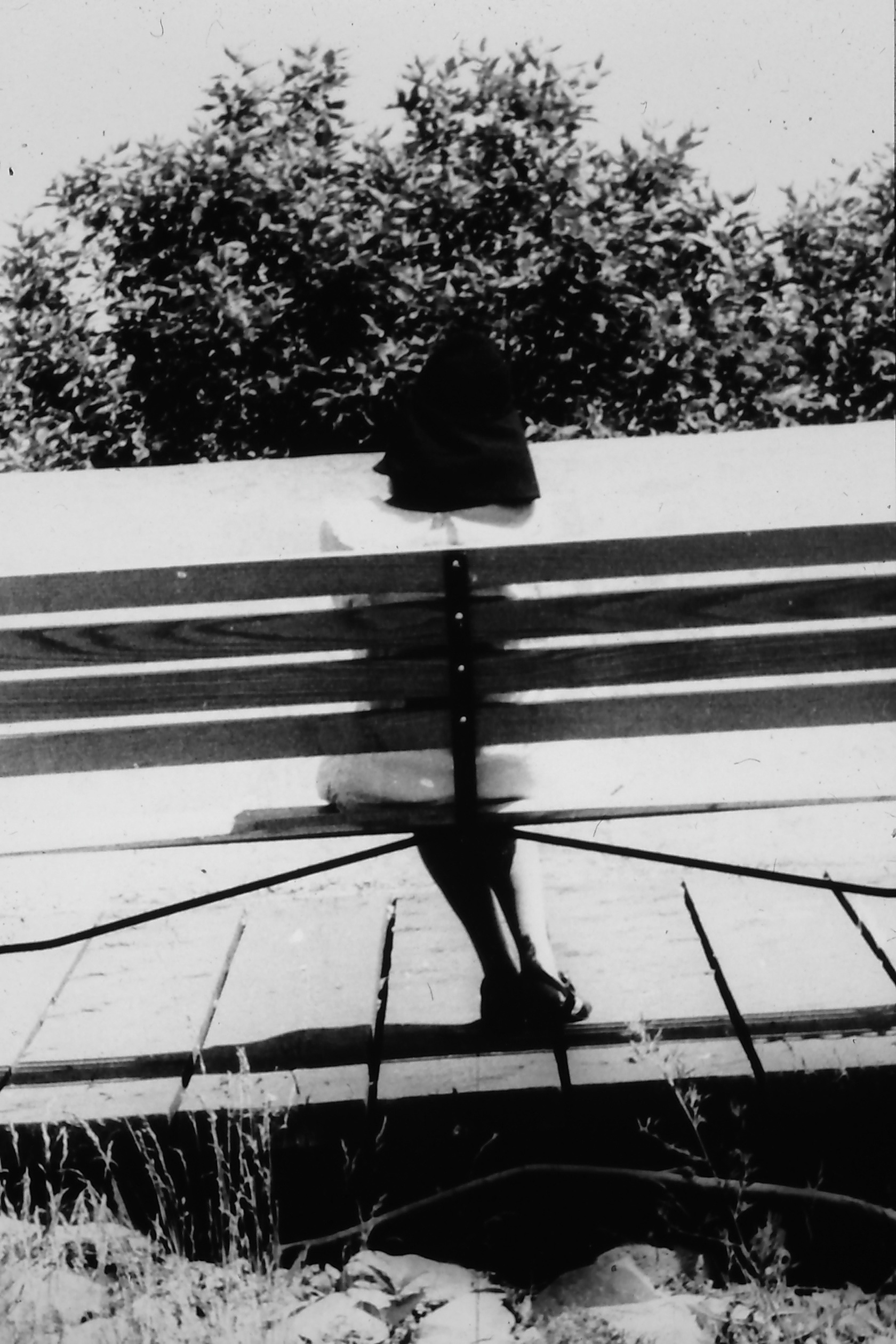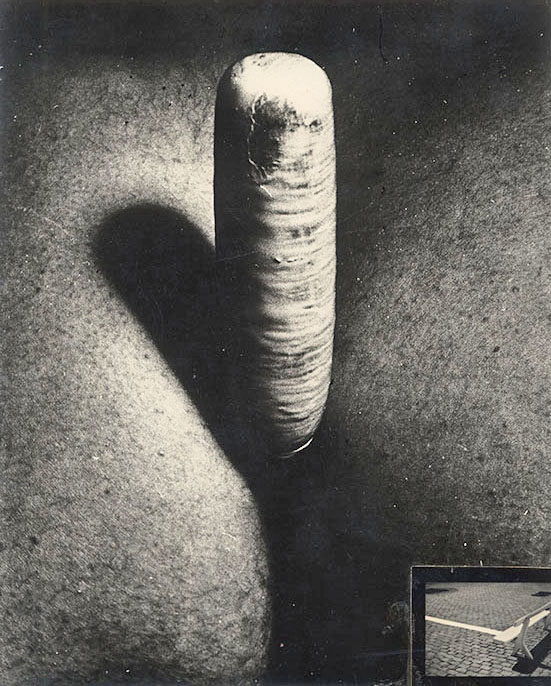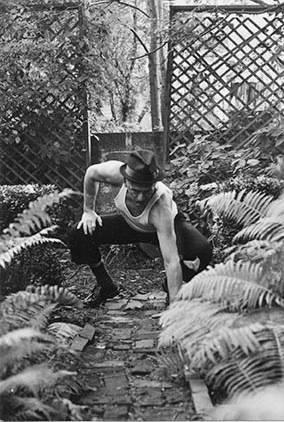Ron: That was made way back in 1964 with Babette Tarshus. It was on the boardwalk at Centre Island in Toronto. I was just beginning to get more serious about photography.
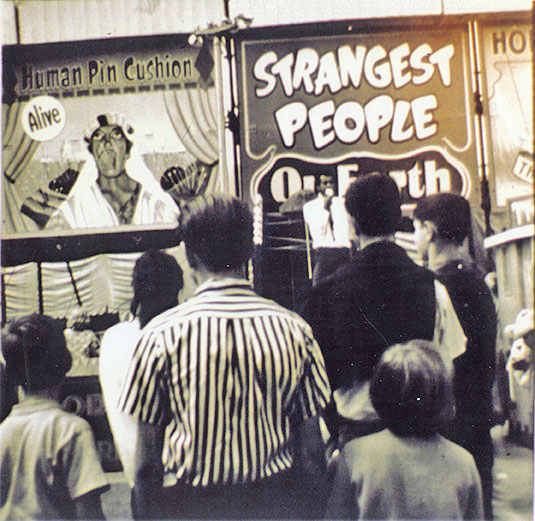
Ron: This was made in 1964 at the Canadian National Exhibition.
Mike: Did you see the Human Pin Cushion?
Ron: Yes.
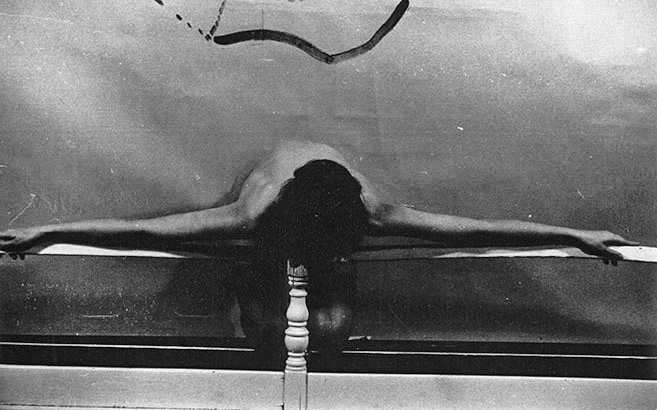
Ron: That’s an important piece right there from 1964. That’s me in the top left corner. This is a woman I met in Toronto, I lost her name. We did a series of photographs together. It was provocative for that time. This was at 404 Palmerston Avenue, my first apartment. It’s a kind of performance photography envisioning what I was going to do later on. Photography at the time was changing pretty rapidly.
Ron: This photo was made about 1965 when we were on Harbord and Bathurst. I worked during the 1960s so my weekend photos were sparse. The strange picture of this woman was the beginning of photo performance for me.
Ron: This picture was banned at a show I did with Bruce Eves at La Hacienda (Toronto restaurant). It was shot in my studio on St. Patrick Street in Spring 1975 with Glen James, he was the model. That’s actually a knife coming out of his ass, it’s not a microphone. He was spread out on the floor, on his stomach, I opened up his rear end and told him not to worry because the knife wouldn’t hit anything. He was just spread out and that was it, we took the pictures.
Like me, Glen James was a student at the Ontario College of Art from 1972-75. He was with Kimo Eklund. Kimo drank a bottle of Scotch before he went to bed every night. He literally drank until he died. He needed a heart transplant and died when he was 26.
I was the bandit, and said to Kimo, “That’s not good, we need something else.” He said, “Ah shit.” I said, “That’s it! Shitbandit.” Shitbandit was Kimo Eklund, Glen James, Johnny Silver, Bruce Eves, Glen Edwards… Kimo and a bunch of other guys made films on horses. They didn’t know how to ride horses. His stuff was so bad it was good. Everyone was taken in by this incredible guy. He was obsessed with sex, he loved sex, of course at 25 everybody does. So he was right in there with Shitbandit. He was right in there. There are a couple of other tragic stories in that era from 1972-75.
When we were leaving the Ontario College of Art we had a show at Gallery 76 (a gallery attached to the school). Brian Kipping was the gallery director and the curator of the show. I think John Scott was part of that group, he didn’t like us very much because we were too provocative and we had the gay thing overriding the whole intellectual discussion. Nobody was worried about that. We handed Shitbandit flyers out at the school and that did not go down too well. This is supposed to be an art school, we can’t be showing this kind of stuff. Some of the people who saw the show couldn’t understand what we were doing. I thought well, that’s fine, you’ve got to do your work.
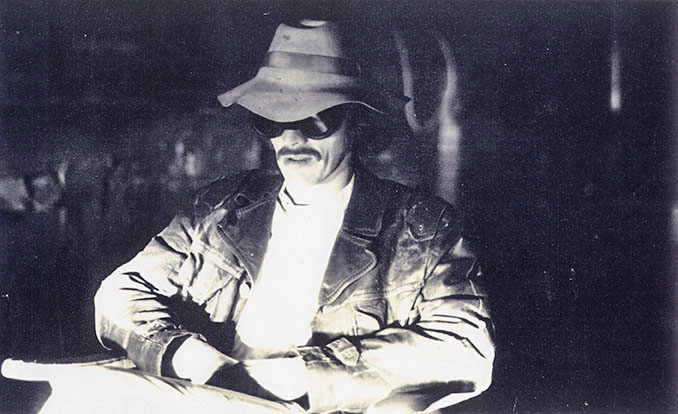
Ron: That’s me, General Giii, in an alleyway down the street from Duncan and King. I was doing a performance behavior, sitting in a chair while we were shooting film. The chair I’m sitting in was wrapped in hospital tape. We used to go to Starkmans Health Care Depot, the medical supply store on Bathurst Street. We’d buy a box of tape and they’d always ask, “What are you doing with this stuff?” I’d say we’re making a film and go into all this bullshit to try and get this stuff, they were a little uptight about it.
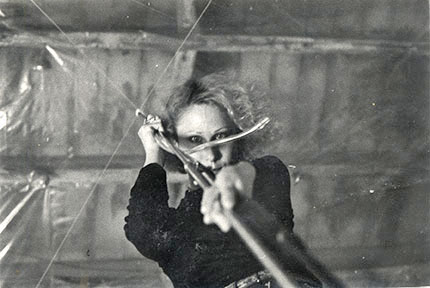
Ron: That’s Marlene Elasz. It’s a hard one to spell. She was in films with the guy from Carmen Lamanna Gallery. Vincent Tangredi. The two of us did a lot of work together.
Mike: What’s she doing in the picture?
Ron: Do you see the rod? That’s from a lighting stand. She was shoving it in my mouth. We did a number of these semi-violent acts. It was at the studio at 4 St. Patrick Street. I didn’t see her after that, she left school and went to Montreal.
Mike: Is this a studio performance?
Ron: It’s a performance photograph. You see we did performance photographs, which no one really understood. We would do actions that were very similar to the Viennese Actionism Group: Schwarzkogler, Otto Mühl, Günter Brus, Hermann Nitsch. We were doing acts that would be provocative but at the same time real, very real. Marlene was so together with her body. She never wore underwear. She would never have anything on her breasts. She would put on a coat and that’s it. She was very free. She used to dance at strip clubs to make some money and it didn’t bother her at all. It was a job, like all the others. She was just a wonderful woman. When I had my first breakdown in 1978 she came to visit me and we did exercises together in this fortress called the Clarke (Institute). She came and said “OK, relax,” and gave me this massage. Here we are at the Clarke and she’s giving this massage! People are coming in and out and asking “What are you doing here?” I was so tired of the institutional stuff. She was amazing.
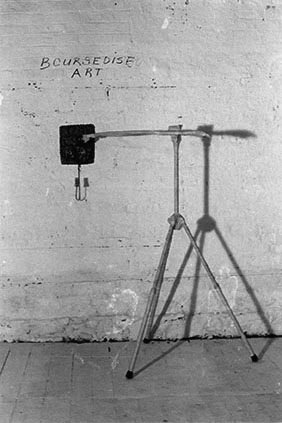
Ron: That was taken at the studio on 4 St. Patrick Street in 1975. The tripod is wrapped using medical tape, I’m not sure if we did the legs. That little square, that little box, was put in to freshen up the idea. Using photo equipment in this way wasn’t an homage to Michael Snow but it’s what we wanted to do. We did medical performances down the road.

Ron: This is in the St. Patrick studio in 1975, perhaps even as early as 1974. It was a very provocative time, that whole year was one thing after another. I’m using the light stand again and broken light fixtures. The balloon thing was connected to an earlier piece I did with a big slab of metal on a balloon. It was a mockery of Richard Serra and his ideas, the big steel man with his huge pieces of metal. Back then he was a war machine, he had enough metal to build a skyscraper. It became very contradictory what Serra was doing and the support he got from October magazine, it was all connections. At that time we were on the outside looking in.
Mike: Would you call this a photo sculpture?
Ron: Yes, it’s a photography sculpture.

Ron: This is a photo sculpture at the studio on St. Patrick Street.
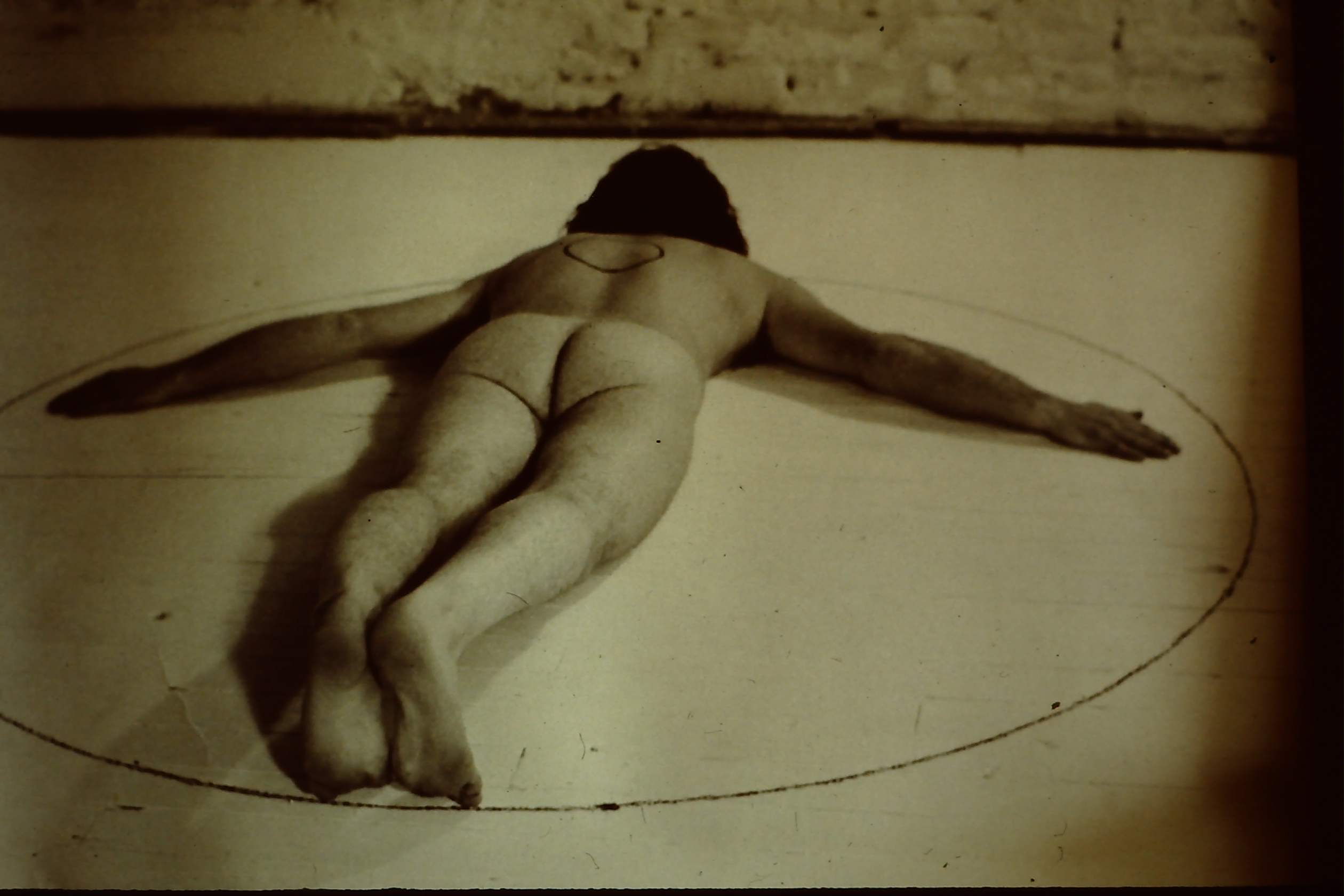
Ron: This was made at 4 St. Patrick in 1975. You see the circle on my back? It was a bit of an homage to Stephen Hawking’s black hole. There’s a bit of sarcasm going on there. That was an homage to the black hole crowd. There’s another one with a black circle coming.
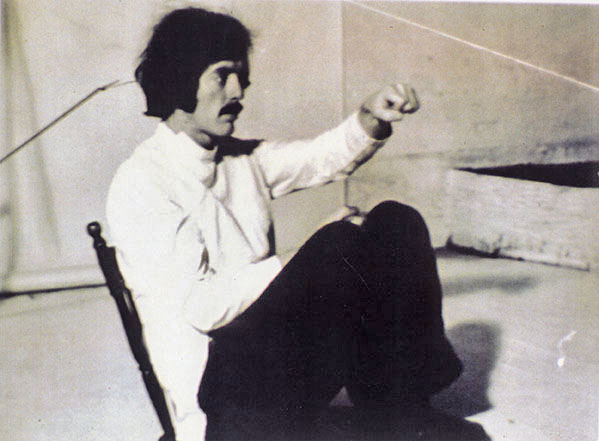
Ron: That is General Giii in 1975 at 4 St. Patrick. You can barely make out the background, but the top of that little riser was painted black. This is a performance photograph.
Mike: It looks like you’re riding a car.
Ron: The legs of the chair are gone, and there’s a compass going into the back of my head.
Mike: It might have something to do with orientation or direction. How you know where you are?
Ron: I was getting deeper and deeper into philosophy. The driving is provocative, it’s not a satire on automatic behaviour but on the direction I was going. I didn’t know why I was doing this kind of work. I was trying to make it interesting, but I was starting to get the first signs that were telling me to slow down. I was driving the bloody taxi on the weekends, keeping things going. That was very hard on me. Eventually the cab won and that’s when I went into hospital.
Mike: What do you mean the cab won?
Ron: I went to London, Ontario in a taxi. Nobody in the car. Then I went all the way back to Toronto and then past Toronto heading east until I wound up in a ditch with very little gas. I had money but that was it. I realized I had to bring the cab back. The cab company had lost touch with me, they phone the police if a car is missing. This is before all the problems started but it was an indication of where it was going. I was working very hard and trying to deal with whether or not I wanted to be an artist. What should I do? Performance was coming. Veronica Loranger and I were totally buddies for each other. Veronica had troubles too. Troubles were coming. I was doing things that made other people wonder: what are you doing? I just kept making pictures, I wouldn’t get into those discussions.
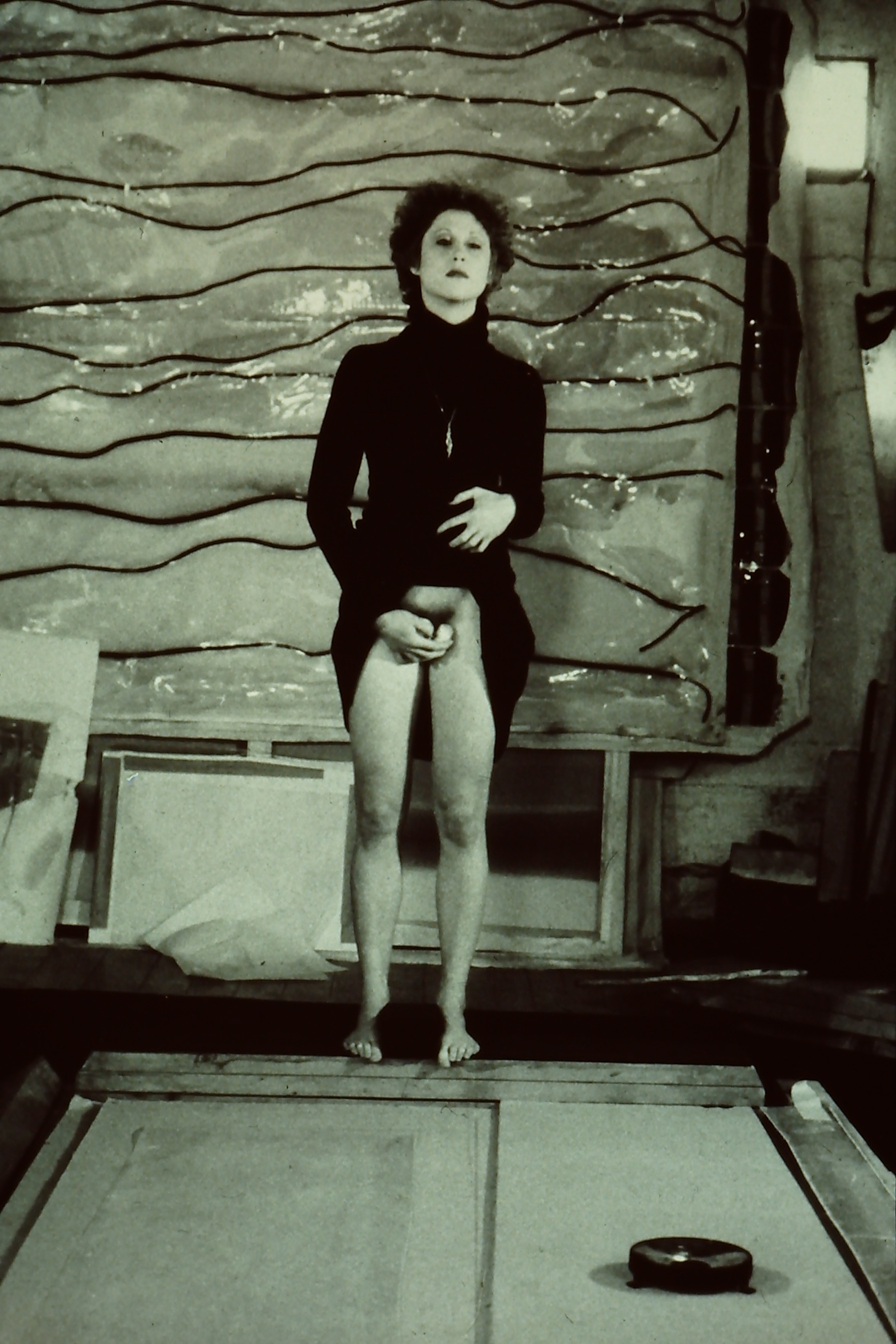
Ron: There’s Marlene. That piece there was pretty provocative. That was at St. Patrick Street in 1975. This is more of a performance and a send-up. I didn’t do much installation after this. She was going to put the rocks in her vagina. I photographed her before she actually did. She didn’t do it eventually, it didn’t really matter. The way she was, she gave so much.
Mike: is this a performance the two of you are doing?
Ron: I have the camera. We did quite a few performances around this theme, this picture is the only one that’s left. That picture is pretty rare.
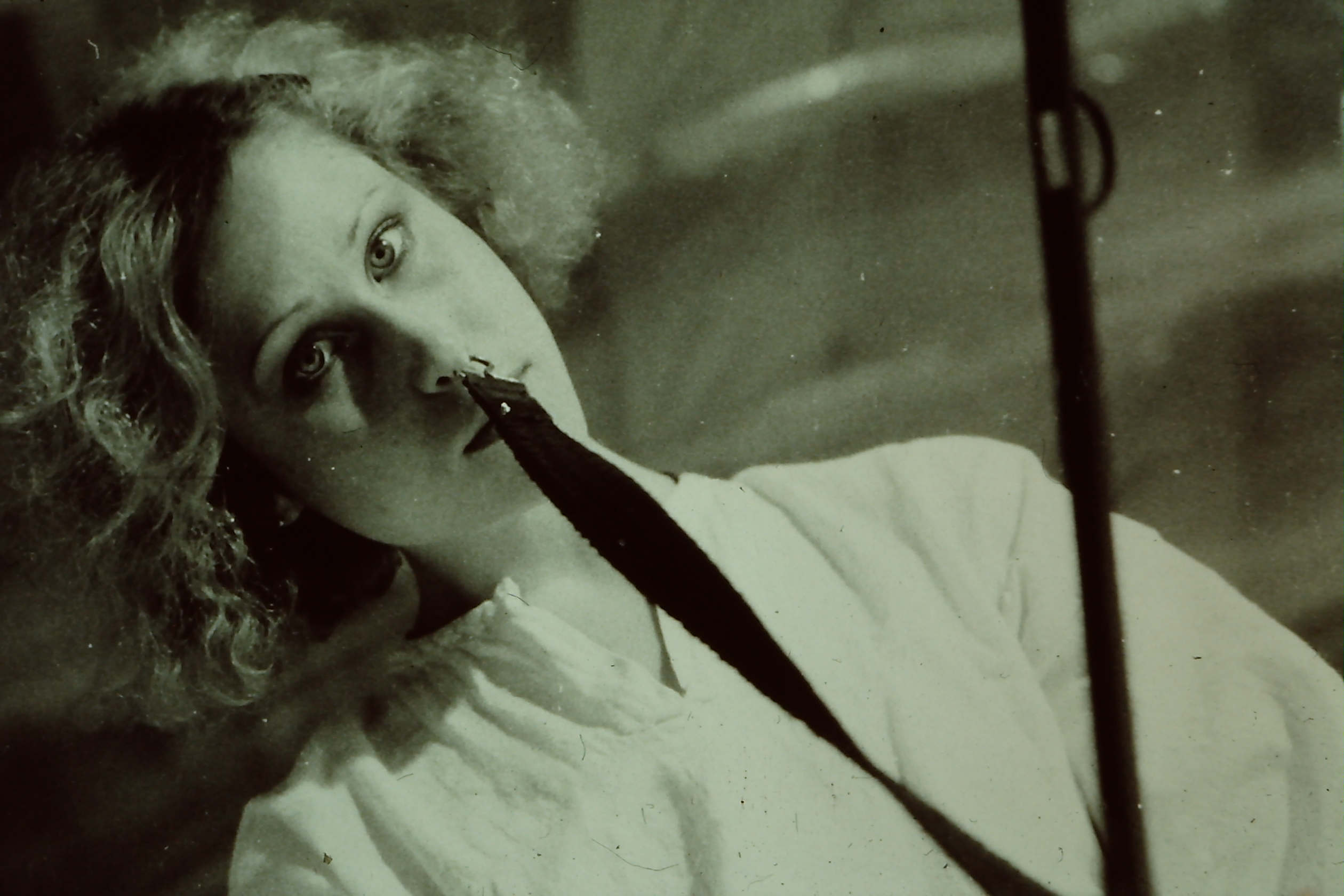
Ron: This is Marlene Elasz again. This was made at the studio in 1975.
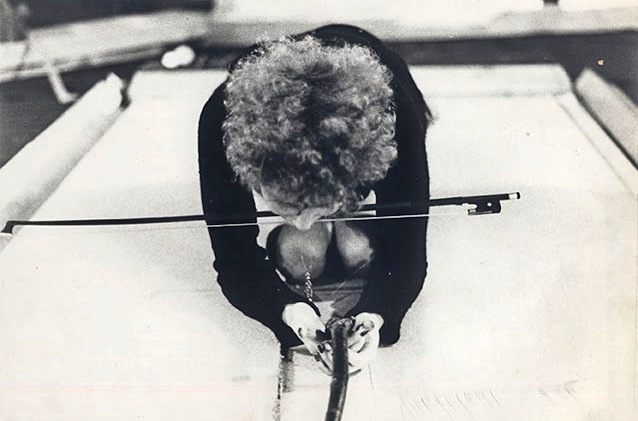
Mike: You wrote on this photograph: “God be with me you Anna. Enjoy enjoy enjoy”
Ron: That’s strange. It’s a reference to Anna Gruda who was a schizophrenic as well. She was at the Ontario College of Art, I had a good feel for what she was doing. Her drawings were a mouthful, just amazing stuff. But this is Marlene. It was an homage to cello player Charlotte Moorman and having to play in a male world.
Mike: Is it about a woman becoming an instrument, or resisting becoming an instrument?
Ron: There was that element. Performance women in the seventies, how were they going to get through what they had to do? I think Amerigo tried to get a videotape of Charlotte Moorman’s work. I don’t know if that ever happened.
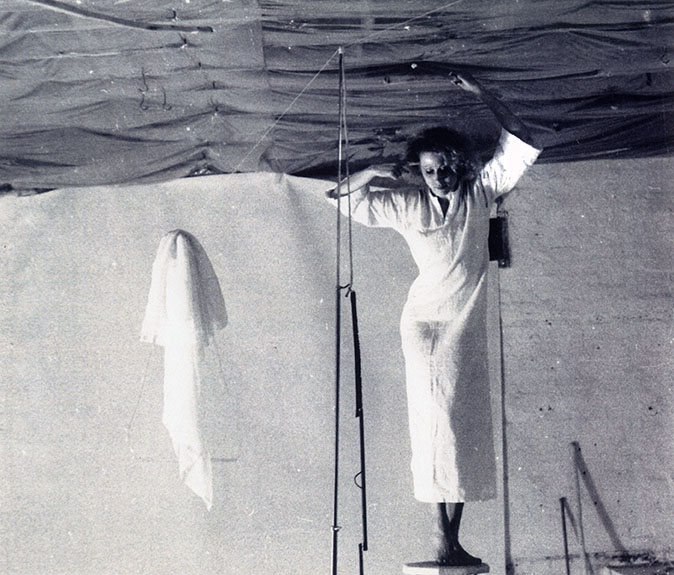
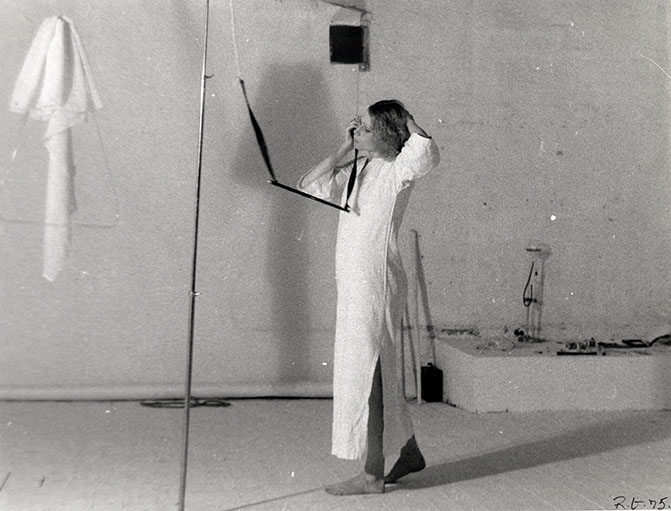
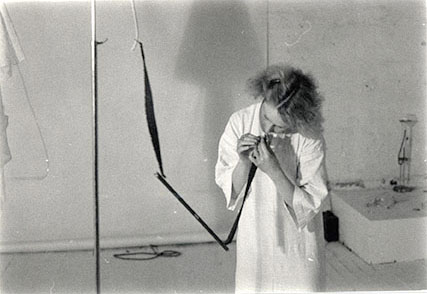
Ron: This is a staged performance by Marlene Elasz. We used the lighting stand to hook up wires. The idea of the orgasm is here, although it’s just a towel. It has a penile shape.
Mike: On the photograph you wrote “Happy birthday fruitcake, 1975.” She’s dressed like a patient…
Ron: There were a lot of medical problems going on right then. Again I’m looking at the medical world with satire.
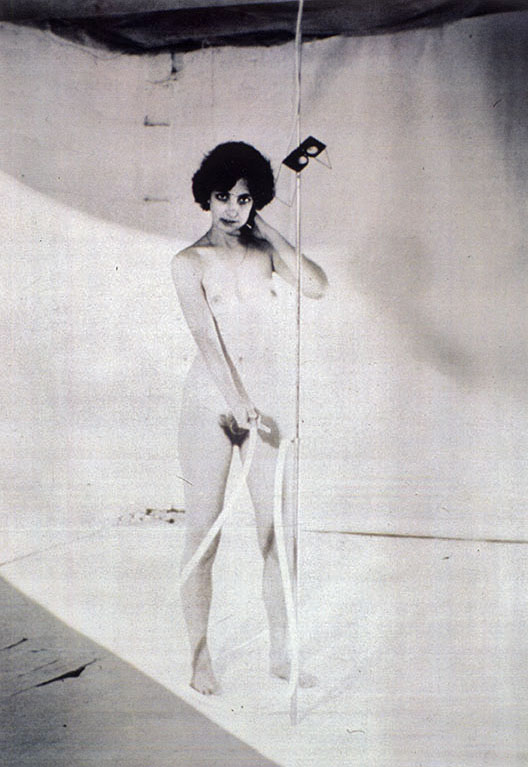
Ron: That is Erica Larner in 1975, she was living with Bruce Eves in Toronto over on Spadina Avenue. These were photographs, a little bit of performance. Again, I’m using the lighting stand.
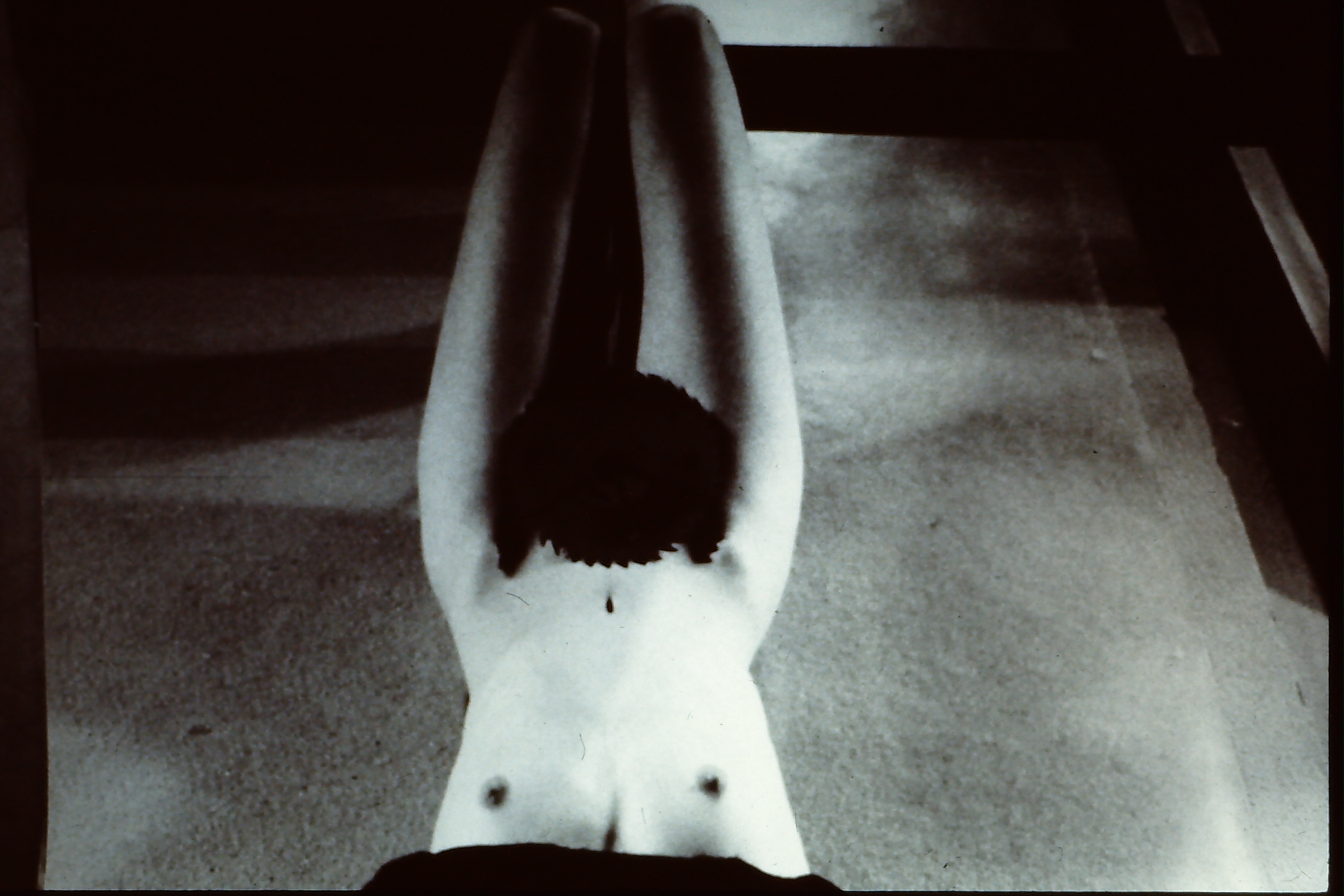
Ron: This is Marlene Elasz, and we’re doing a send-up on sexual violence. There was an American performance artist or painter who used the same apparatus. It’s a saw blade. It was beautiful for me because I had worked in a couple of sawmills out in British Columbia. A world of hard work.
It’s a really interesting image. It combines sexual mysticism with a keynote about violence. It’s about the politics of sex and sexual violence. You have the grinding lifestyle of a guy in the woods, chopping trees or building a house. There is a connection between building and destruction, you have the prophet and the cost of action. Oh well we’ll just chop down another tree and put the pieces in the woodshed and use them. Living around this violence was hard for me, I couldn’t chop down a tree. I couldn’t do it. It sounds crazy but that’s just the way I was. I remember my brother cutting down a two hundred year old ash tree. I saw him doing that and said to myself that’s wild, brutal. He used these big blades to cut into magnificent trees.
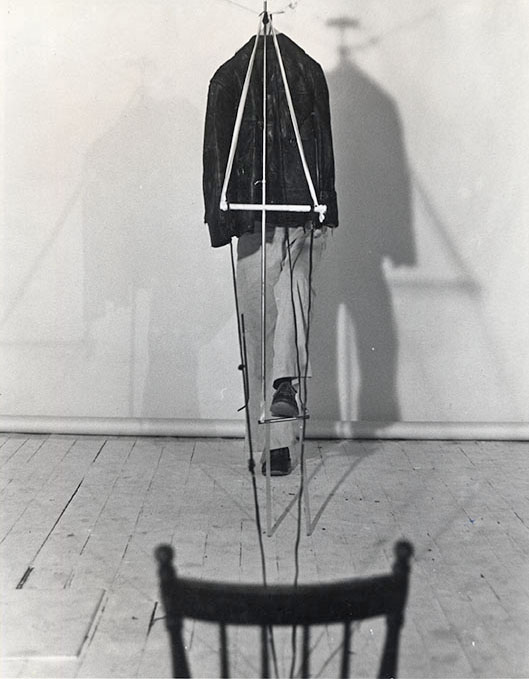
Ron: This is an homage to Joseph Beuys. The mystic triangle, the hidden body. The chair was a satirical comment on Kosuth’s conceptual art chair. On the top here, you can see it better, see the shadow in the top of the photo? There were two light bulbs joined together, but we took off the bulbs and left the two bases. That’s a little bit of mysticism. We were getting into the Beuys phenomena. At that time there was Beuys and then there was everybody else. He was a kind of shaman, though I don’t like that word. I thought he was one helluva good philosopher. When we met Beuys at Documenta 6 (1977), he was a persona. We shook hands with the guy and the celebrity factor was just huge. You couldn’t move there were so many people in the room.
Mike: Is this a staged photograph?
Ron: Yes, it was staged. We did quite a few of those.
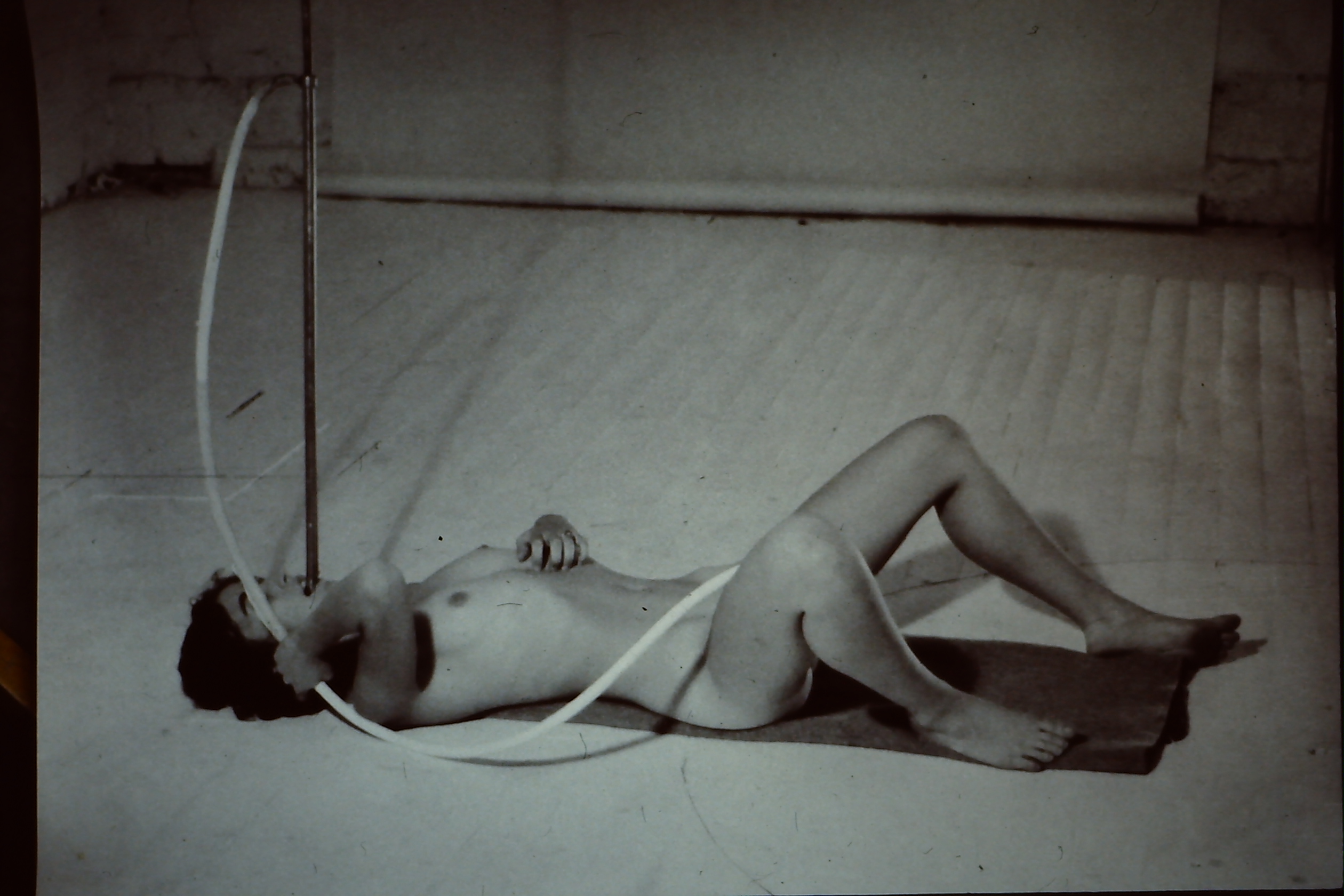
Ron: That’s Erica Larner. I was incredibly aware of the violence towards women back then, in the seventies. It was a time when there was a certain philosophy of women that was really degrading. I didn’t know what to do. To me the body was something sacred, almost religious. But if it was sacred then you should have some kind of philosophy behind it, especially if you’re an artist.
When I was going through this stage there were problems with having people look at the work. I didn’t want to do it anymore because I was going to get arrested. If the police look at it they’re going to tell me what to do. There was the feeling then that you could only go so far, but if you stepped over the moral edge you were in trouble. Here I am, taking a picture of a woman, I’m breaking the law with the camera. I’m allowed to take the picture, but if I want to show the pictures that isn’t allowed because it’s pornographic. To me that meant that women were pornographic and men were pornographic. The system had turned against artists.
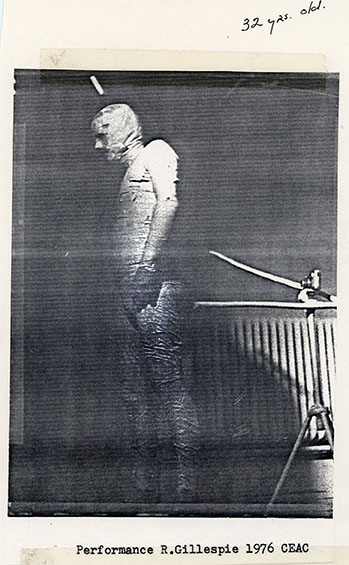
Ron: This happened at CEAC’s John Street location in 1976. I’ve got a small camera on a tripod, taped up, and it’s going in my asshole. The camera is not live, but it produces a sort of torque, there’s a tension having the camera be part of the performance. It was promoting an anti-modern feeling. Medicine was so modernized, and I was completely into biology and Darwin. I was warning people about the medical world. This was before I was wrongly diagnosed as schizophrenic.
In this performance my whole body was taped so I’m moving around very little. I only had twenty-five minutes before it would kill me, it was a kind of death piece. My whole body was held so I could barely breathe. My best friend was working at the Addiction Research Council, studying to become a nurse. She helped me put the tape on, but she kept saying “Uncle Ron you’ve got to get out of there, you’ve got 20-25 minutes.” I got taped at my place, then we went over to the gallery. There’s a knife sticking in my head, we just taped a piece of wood on the head and put the knife in it. It’s the same knife we used for Glen James. I do that with all of my work. I don’t let go because there’s always a way to reconnect the pieces.
Mike: Is it mostly a tableau type performance because it was hard to move around?
Ron: I did a couple of things, including asking people their names. Unfortunately this picture is not a very good documentation of what was going on. But the idea of the monster was not in our vocabulary. We weren’t interested in that. We were interested in the medical school and the conflict, and there was a lot of conflict.
Also by 1976 AIDS was in full bloom. We didn’t call it AIDS then, it was “the thing.” No one knew how to describe it. I kept telling the guys to read Darwin. The Origin of Species (1859) will tell you fairly succinctly what the hell is going on with viral mutations, the types of problems you’re going to have with your nutrition and diet, the kinds of foods you’re eating and where it’s from and how it’s produced. There was a whole medical corkscrew going on. People were pissed off. In New York it was a nightmare. I remember going down to New York to see Bruce Eves in the late seventies, 1979-80, and I kept telling him, don’t fuck around with anybody but (his boyfriend) John (Hammond). That was a hard thing to do because there was no way of knowing just what was going to happen, you had to be so careful. But if you’re at a bar and get drunk, meet a guy and get it on… it was a form of suicide.
Did people die because of sex or because the medical world didn’t know what they were doing? I thought it was because the medical world didn’t know what they were doing. The medical world was telling people what sex was, or what it could do. There were a lot of contradictory messages and we were right in the middle of it. The heart of the sexual community in Toronto, and the heart of the lower east side sexuality in New York, stymied the provocative onslaught of the medical world who were trying to tell people that AIDS was strictly a gay disease. We knew then it wasn’t true. It was a historical mutation probably picked up who knows where, the same thing is going on right now with Ebola.
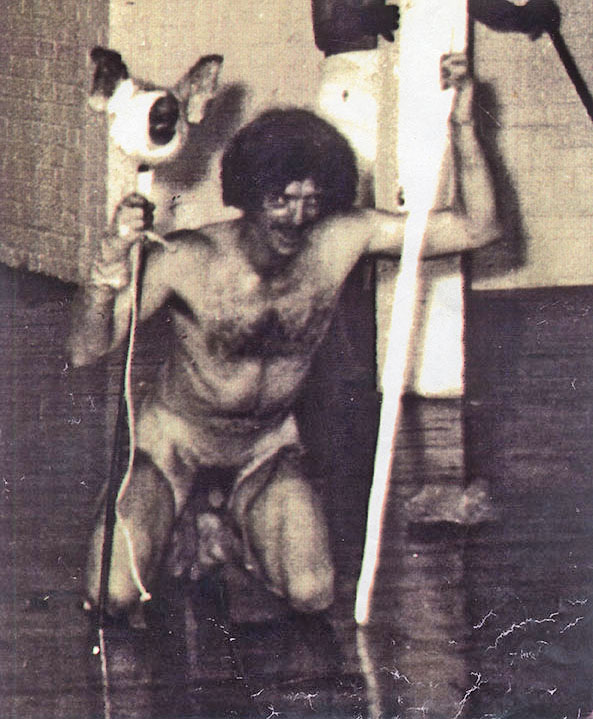
Ron: We did a big performance called Katchibatta in September 1976 for the opening of CEAC’s Duncan Street building. Marlene was the link between that performance and the earlier work in the studio.
There were three women involved: Marlene Elasz, Debbie Pollovey and Lily Churo. You see the knife in Lily’s hand? She stabs the pig’s head. This photo was taken a few minutes before the stabbing.
We couldn’t rehearse the piece. We had to get this done. We had only about three or four minutes of discussion about what we were going to do. We went on after Michael Snow performed on the piano with Larry Dubin on drums. What’s he going to think? We were quite bombed, high on drugs, but we did this thing. I had ropes tied up around my legs and kneecaps so I had to crawl. The old medical thing meant we had tape on the pig’s head. This staff I’m holding onto was almost… not a weapon, but the only thing that would keep me going. I was always on my knees.
It was a huge opening so there were a lot of people there. We were talking about territory. We put ropes up around the performance space which was quite large, and that squeezed the audience. The audience started throwing beer bottles at me and glass was breaking. It was totally insane. After the bottles got going there were shouts and whistles and I was afraid for the girls, but not for myself. I’ve done all kinds of stuff.
When they started throwing beer bottles we started throwing hamburger meat at them and it got quite wild. I could feel that Marlene, who was dancing, was starting to get worried. The glass and my knees were starting to get really dangerous so I thought I had to get up. I finally managed to get up. There was almost a full-blown riot. By the time I stood up again on my feet, we had a spear and it was pointed at the audience. I went up and grabbed the spear, Marlene might have had it, then I took the spear and I put it back like this, as if to throw it into the crowd, smiling the whole time. I gradually turned around and walked out to the exit where the dressing was. It was chaos. Michael Snow came running in and asked, “Are you OK?” He was totally wiped out. That was Katchibatta.
Mike: What does Katchibatta mean?
Ron: It was just a word that came to us. It had a little bit of Japanese and French in it. I wanted a word that started with K. There’s Mr. K in Kafka’s The Castle.
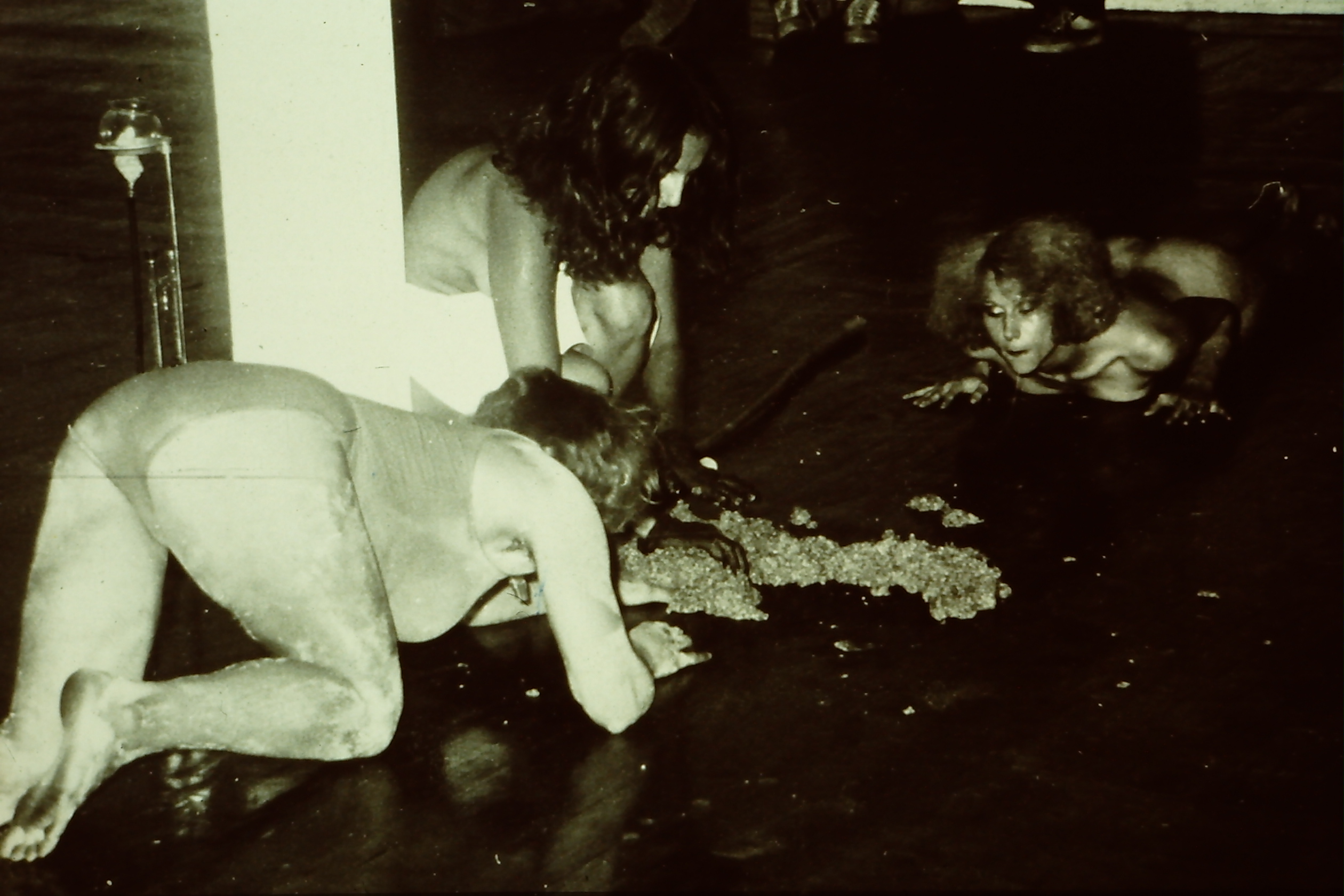
This is Katchibatta again. Marlene just died last April. In order: that’s Debby Pallevey, Lily Chiro and then Marlene. This is a mockery of hamburger meat. We were coming on about the meat generation. There was a food crisis going on. At that time there was a lot of debate about the quality of food and how we were producing it. There were a lot of things going on in the meat industry that came into question. How were the cattle raised and how much actual hamburger meat is America going to consume this year? The performance was also about hunger. Some have too much and others too little.
We were doing this in the 70s. Performance art was no man’s land. The critics were asking: what are you doing? Why are you doing this? Roald Nasgaard (former chief curator of the Art Gallery of Ontario) came to a performance and walked out because he was strictly a painting man for the institute, that was his thing.
Dot Tuer wrote: “Gillespie’s performance situated the audience as the aggressor and featured performers enacting ritual definitions of territory. The performance began with Gillespie crawling naked on his knees into the gallery space, his thighs and ankles bound together with leather, and carrying a staff with horns mounted at the top. SHITBANDIT members Glen James, Lily Y, Marlene X, and Debbie Pollovey followed behind him, faithful disciples of the guru. Circling one another like animals in heat, they engaged in mating gestures, alternately challenging each other and the audience. The climax came when the performers began to throw lighted matches at the audience members, who responded by hurling beer bottles back. At this point, SHITBANDIT disbanded, retreating in the face of audience outrage, and the opening night of CEAC came to a close.” Dot Tuer, “The CEAC was Banned in Canada: Program Notes for a Tragicomic Opera in Three Acts,” Mining the Media Archive (Toronto: YYZ Books, 2005).
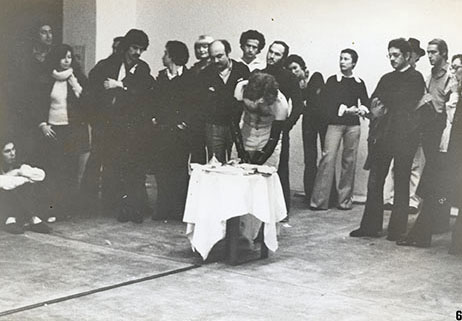
Ron: This is a performance in Milan, 1977. The man standing next to me is very important, he was a Marxist millionaire named Salvator Ala. He died a few years ago. This was another medical performance, my arms are wrapped up with black medical tape. That was synonymous with the fascist movement, only here it was a mockery, a satire, but it was controversial to work with that kind of image. There were so many worlds: the biological world, the medical world, the capitalist world, the Marxist world. We were trying to do body art or performance art. They had never seen this kind of thing, with a few exceptions, there would have been a few Italian performance artists at that time. But this was in a very wealthy man’s gallery in Milan that was named after him. Salvator Ala Gallery.
I’m walking on a line because the performance is talking about the limits of society at this time. People going over the edge, there’s a bit of madness going on.

Mike: Did you talk to the audience?
Ron: There were absolutely no words, only actions. I’m walking and I have a table full of medical instruments. I was getting these instruments from Starkmans on Bathurst, there was some good stuff there. This performance was a tribute to the natural world and the not-so-natural world. That may sound like dualism but I’m walking on a line. It was about a historical move that was going on in the medical world, they were doing things that were pretty raw and dangerous.
Mike: Experimenting on people with mental illness, for instance?
Ron: That’s one thing, but they were also experimenting on gay artists. That didn’t necessarily get through to the press. But the New York Native reported on a number of men who were taking AIDS medication and experiencing incredible side effects. They were giving people pills that they had only tested on lab rats. They had no authority at all to do this, but they were playing around. The health crisis going on in the United States, especially in New York, caused people to lose respect for the medical profession because of the way they were treating the gay world and the mentally ill. People were jumping off bridges, the only reason there were no law suits was because no one could afford the lawyers. There was pushback from the gay world but not from the mental health world. There was no advocacy at all. I was taking pills in the late seventies that were hardly known. There was so little information about what they were giving you, it was almost like a trial.
1978

Ron: This is Marlene in a performance at CEAC on Lisgar Street (at Queen). It was in 1978. After CEAC closed their building on Duncan Street they (Brian Blair, Paul Doucette and Saul Goldman) moved to a building on Lisgar. The Lisgar performance was written for Marlene Elasz with a vaguely political action on power by big business. We had a set of cards with each card a different word which we gave out to the audience who were then asked to improvise on the word. That performance in Toronto was one of the last for me until ABC No Rio in New York which led to St Marks space in the Lower East Side. Marlene never performed with me again as she moved to Montreal.

Ron: I forget her name now, she had drug problems. The picture was made was on Portland Street, I had a studio there around 1980-85. I took a series of photographs of her and Lily Churo who was living next door for a couple of weeks. Lily was homeless, she had been in New York and was part of the Katchibatta performance with Marlene and Debbie Pollovey. This woman came to meet Lily as far as I can remember. It’s very foggy. She was an addict, but she wouldn’t talk about it and I couldn’t help her, there was nothing I could. I just took a few photographs.
There was a lower east side in Toronto and there was a lower east side in New York. They were very different but there was a huge drug problem in the seventies, people didn’t give a shit, they didn’t care. The heart was gone. People died. Pneumonia, lung diseases. She was a little bit of an eye opener, she had a few friends but they were dealers. The thing with the drug community is that they always know where to get drugs. She would sell her body for five bucks to get crack. Or if she wanted to get something more exquisite she’d go for cocaine. I knew all that because of my buddy Veronica who was a nurse going for her Bachelor of Science degree and working at the Dixon Research Council. Between the two of us we saw quite a bit. I was driving cab and that was a nightmare job. I wanted to make a colour picture of her on paper one day, but I never got round to it.
mid-late 80s
Ron: That’s Brooklyn, just off Flushing Avenue. That would be in the mid to late 80s. Bruce Eves would know. That’s Uncle Ron. This is the backyard of Bruce Eves and John Hammond. Bruce took the photograph. Hammond was the editor for the New York Native (1980-97), a gay paper that came out on a fairly frequent basis (biweekly). That paper did the most radical writing for the gay world, and of course they were going after the Centers for Disease Control in Atlanta. All the top government officials were in Atlanta studying AIDS and delivering messages. But when AIDS information came out from the gay press, it felt like we were hearing from a different world. I keep going back to AIDS, but this is a mockery performance I’m doing. I’m talking about physical fitness. Everybody is telling you that you have to be fit to live. There was a certain amount of irony there, well, why get fit when we’re all going to die anyways? It’s also a comment on the body art movement.
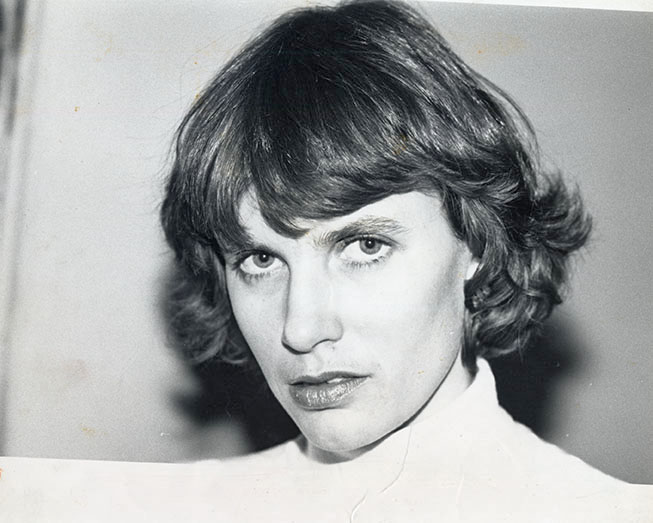
Ron: That’s the famous Valerie Kent. She was a schizophrenic. I used to call her Greta Garbo, she was a knockout. She was very close to me because I would get her away from her controlling mother, I was trying to get rid of her in any way possible. When I came along I thought this is ghastly, how is she is going to get out of it? She lived way up in North York, in York Mills, is it? I met her through the Clarke.
Valerie Kent never seemed to have any money. I was the only one with money because I knew how to look after myself. At least I could do that. Valerie wanted to get rid of her family and be on her own but she’d get sick, she wouldn’t take her medicine and finally they used shock treatment. But it was probably her mother who wanted that because the mother couldn’t handle it.
1987
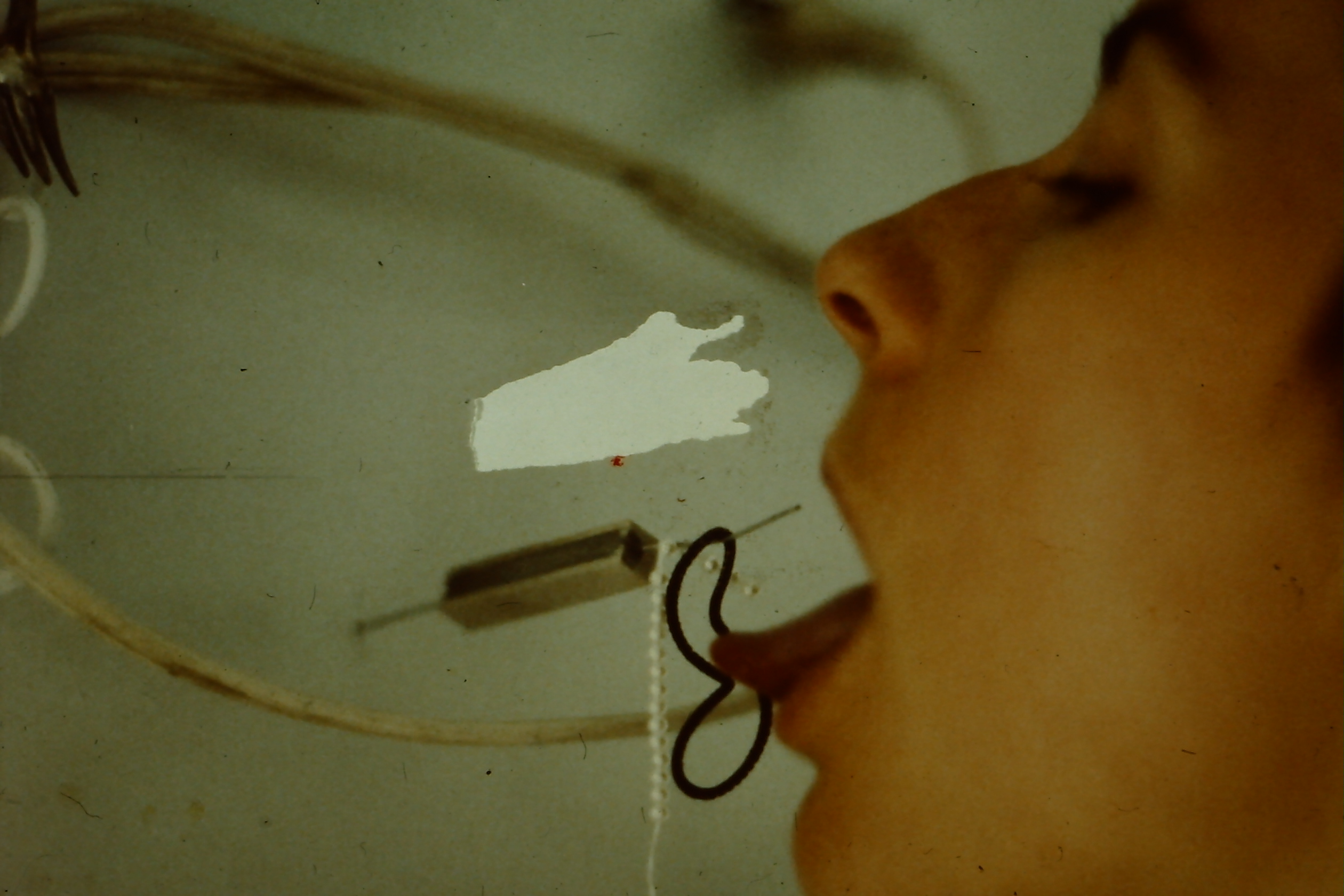
Ron: This is Darinka Blagah during the time we did “Taste,” a (25 minute) film made in 1987. This was at 4 St. Patrick again. I was doing the writing and directing, and John Porter shot it on super 8. It’s pretty wild because it’s all sexual politics and biology. I still have the master copy, it’s been an underground film for years. Darinka and I are in it, we shot it in the alleyway where I did some of my earlier photographs. I can’t remember exactly when I met Darinka but it might have been 1978-79.
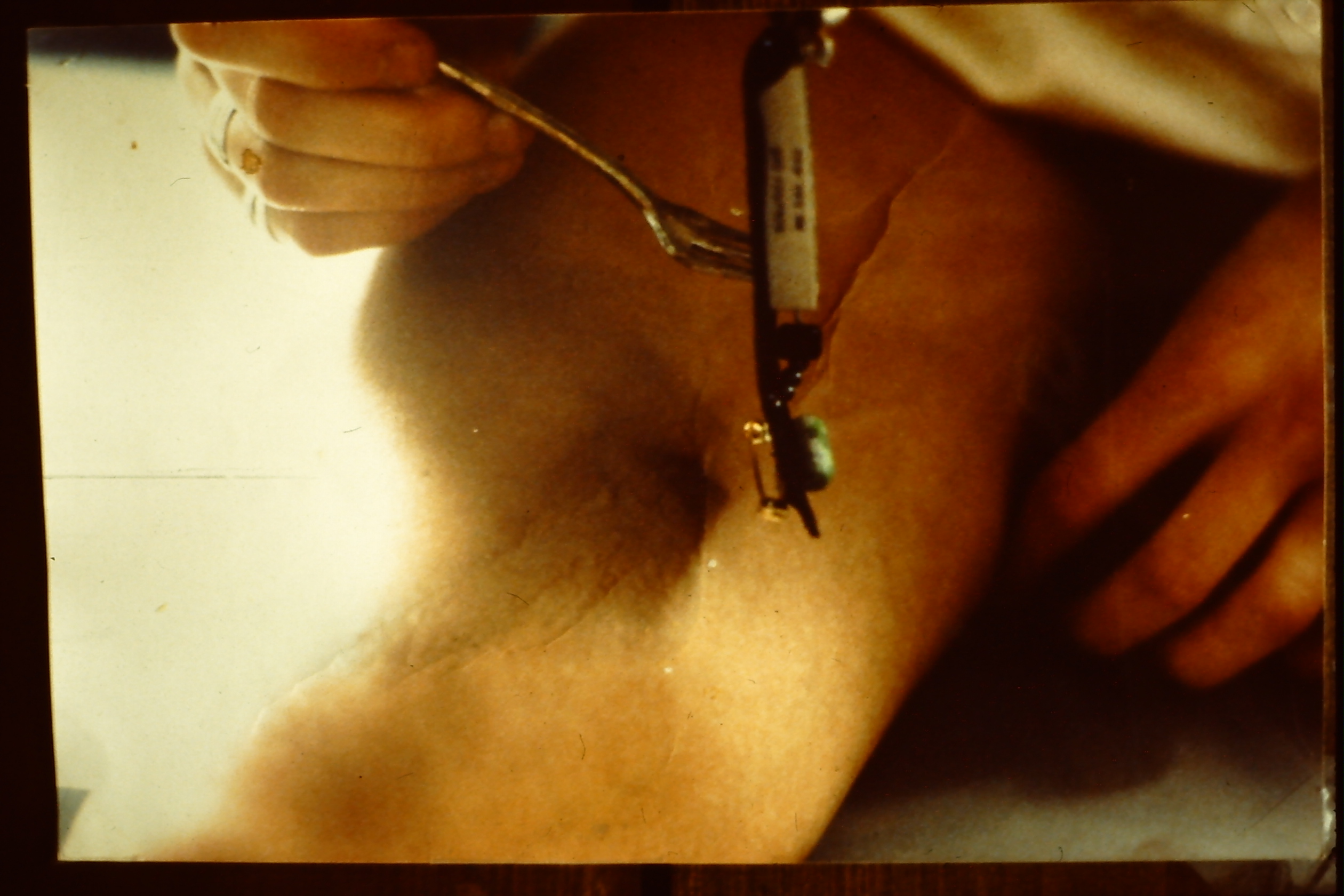
Ron: That looks like Darinka Blagah, she was going to put that in her vagina, and I don’t remember if we did it. It was a little transistor for a computer. There was a store down on Queen Street across from Pages Bookstore, Active Surplus Electronics. I went in there and got some of this computer stuff and thought this is going to be useful but after I used it a few times, it didn’t work out and I wasn’t too interested in the photograph.
1990s
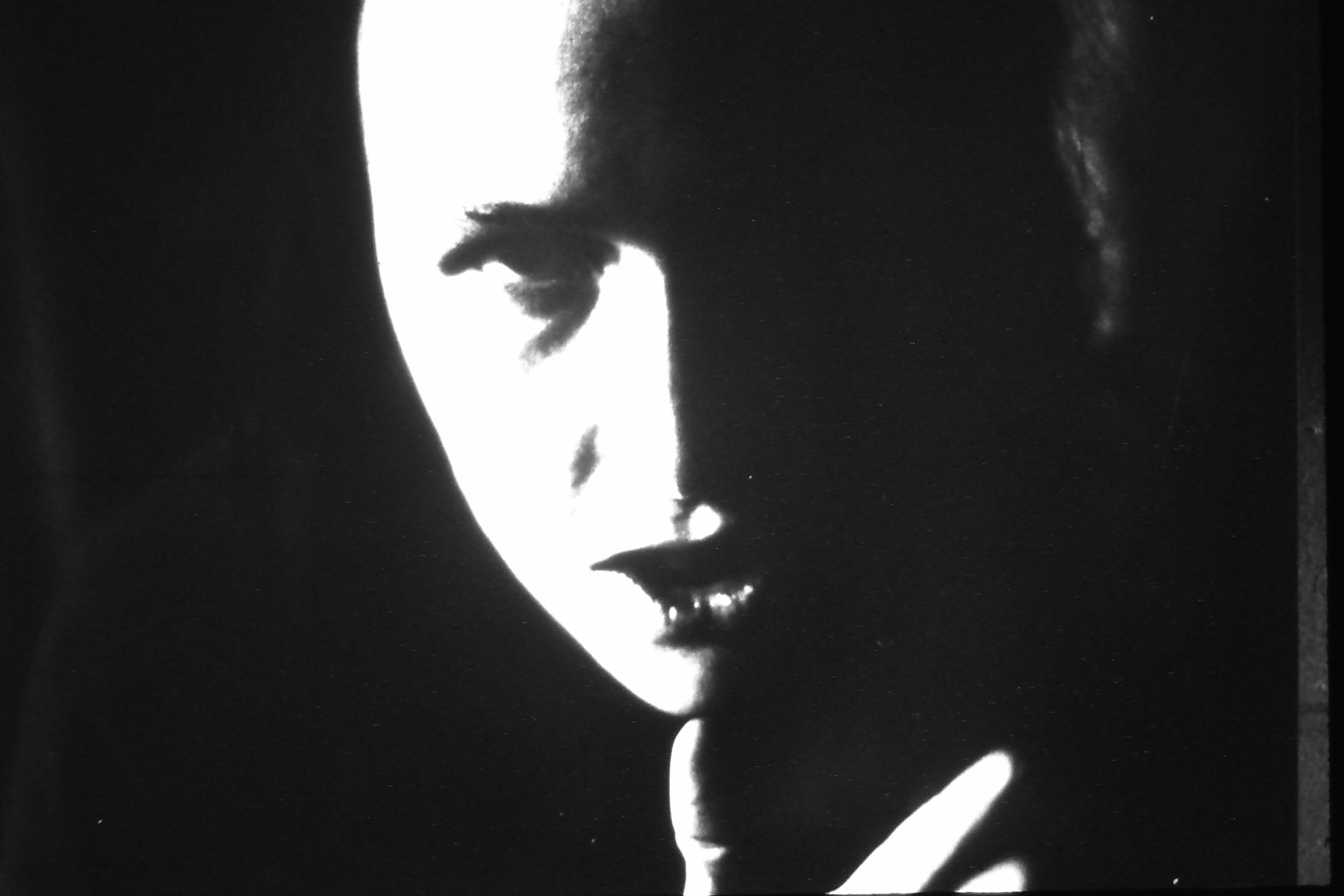
Ron: This is Joy from Queen West. I can’t remember her last name now. That was quite late, in the 90s. I met her at La Hacienda Bar and Restaurant. We knew some people in common. We had a good rapport, she was very funny and never let anything bother her. A real tough cookie. I had fun doing photos of her. That was not performance, it was a photograph.
